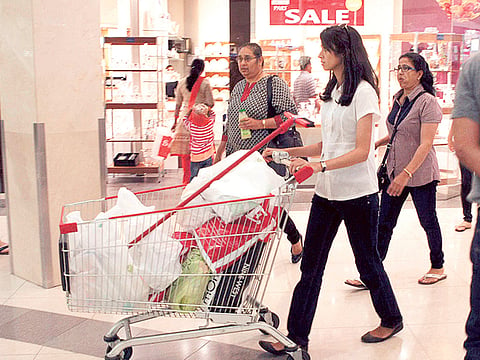Alarm bells ring for luxury sector in the UAE
Sales could be down to their ‘mid-teens’ this year and no respite is in sight

Dubai: Luxury brand retailers in the UAE have had the toughest four months in recent history, with some saying that sales are even lower than what they were in 2009. According to some estimates, the year-to-date percentage sales decline would be in the “mid-teens” while that for the overall retail sector would be about 5 per cent from 2015 numbers.
“Things are difficult because luxury retailers now have more mono-brand outlets open than was the case in 2009-10,” said an industry source. “And not just in Dubai, with some of the recent store openings being in Abu Dhabi. With more stores open and demand weak, average sales per outlet are lower than in 2009.
“Keep in mind that The Dubai Mall had just opened and the high-end boutique malls in Abu Dhabi were still some years away from their launch. High-end retail has changed dramatically between 2009 and 2016, especially in the sheer number of mono-brand flagship outlets that have opened. No brand would think of nothing less than a stand-alone store at the destination malls in Dubai and Abu Dhabi.”
It’s not that luxury sales went down all of a sudden this year. They were weak through last year, but picked up slightly during the last quarter helped by buying from Gulf shoppers. But from January onwards, the slight spike in demand had vanished and the pace of decline accelerated.
“The UAE luxury retail is suffering the Chinese shopper malaise — not many of them are around to queue up at the stores of some of the biggest names in luxury,” said a senior official at one of UAE’s leading retail entities. “Those who are still coming are not spending as much — average price point is now Dh5,000 and no longer the Dh10,000-Dh15,000 we saw as recently as in 2014.”
Unlike other categories in retail such as apparel, luxury brands cannot opt for a quick “sale” their way out of trouble. Brand principals are absolutely against the practice of heavy discounting to shed inventory, in the belief that it will spoil the image permanently.
So far, retailers say, they have gone in for “slight” price changes to pick up the stock that is getting close to being off-season. They have also pursued opportunities to put up the merchandise on high-end fashion e-commerce portals, which also allows them some leeway on the pricing.
It remains to be seen whether luxury retailers will soon have a rethink on the size of their store networks. In the next two to three years, more high-end malls are opening in Dubai, though some distance away from the Shaikh Zayed Road stretch where The Dubai Mall and Mall of the Emirates have already laid down the marker.
The UAE currently occupies a Top 20 position in terms of new retail capacity being created worldwide. For mall owners with ongoing projects, the only question that matters is how quick they can get their leasing done. And on what rental terms. In their own way, retailers, and the luxury labels among them, will be just as keen to know the answers. On this would depend what sort of bargaining chips they end up holding in the negotiation process.
Sign up for the Daily Briefing
Get the latest news and updates straight to your inbox



